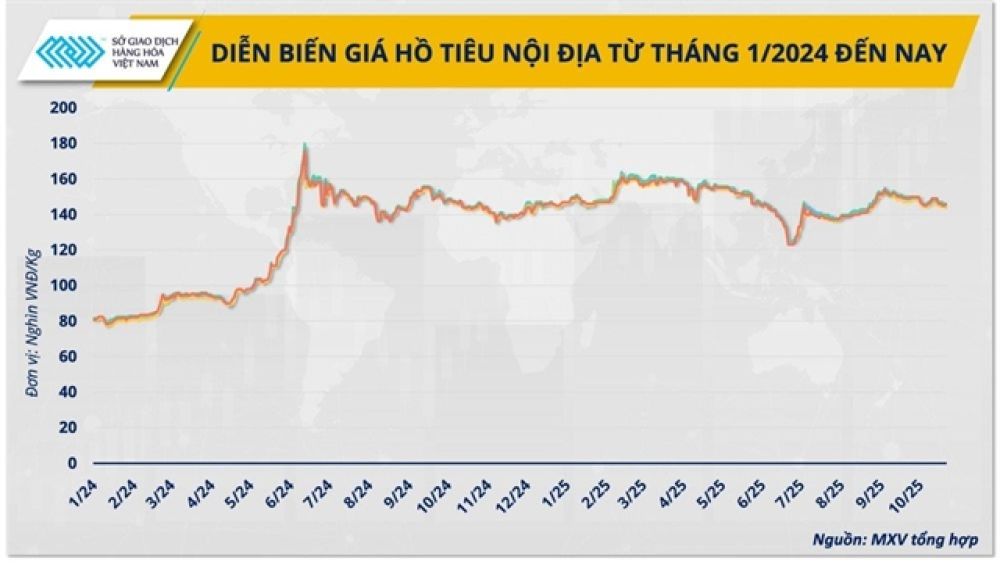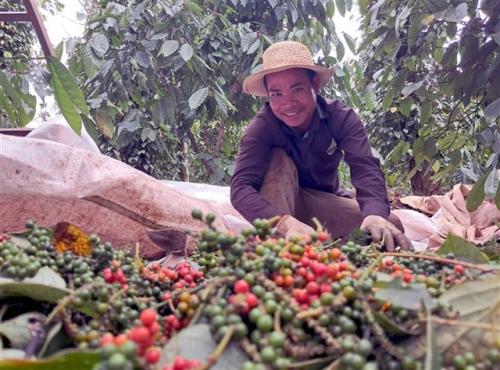Việt Nam exported about 188,000 tonnes of pepper worth US$1.27 billion in the first nine months of 2025, down 6.3 per cent in volume but up 28.7 per cent in value year-on-year.
HÀ NỘI — Việt Nam’s pepper sector has maintained its leading global position despite sharp price swings over the past year, driven by supply shortages and higher logistics costs.
Việt Nam exported about 188,000 tonnes of pepper worth US$1.27 billion in the first nine months of 2025, down 6.3 per cent in volume but up 28.7 per cent in value year-on-year, according to the Ministry of Industry and Trade. The average export price reached $6,774 per tonne, up 37 per cent from 2024.
The strong export performance came despite a volatile year for global pepper markets.
According to the Vietnam Commodity Exchange (MXV), domestic prices doubled or even tripled in 2024, peaking at VNĐ180,000 per kilo ($6.92) - the highest level in a decade.
The Vietnam Pepper and Spice Association (VPSA) said average prices rose 70 per cent in the first half of 2024, driven by global supply shortages as major producers like Việt Nam, Brazil, India and Indonesia all suffered 10-20 per cent output declines due to extreme weather.
Disruptions in the Red Sea and Suez Canal further raised logistics costs, while global consumption continued to grow 3-4 per cent annually, especially in India, the Middle East and Europe.

Việt Nam remains the world’s top supplier, accounting for 35-40 per cent of output and over half of export value. Despite a smaller cultivation area of about 110,500 hectares, productivity has nearly doubled the global average, sustaining output at around 200,000 tonnes in 2024.
In 2025, total production is projected to drop to 180,000 tonnes under the impact of El Nino.
Another factor keeping prices high is a US trade policy that imposes a 40 per cent tariff on goods shipped through third countries, prompting Vietnamese exporters to reduce imports of raw pepper from Brazil and buy more from local farmers instead.
Nguyễn Đức Dũng, deputy general director of the Vietnam Commodity Exchange, said pepper prices were likely to stay around VNĐ150,000–151,000 per kilo until year-end and could approach VNĐ155,000 if supply tightens further.
However, a sharp rally like mid-2024 was unlikely to return as speculative funds had shifted to other commodities such as coffee.
Although pepper prices remained high, the industry still faced challenges from a strong US dollar, tight monetary policies and stricter quality standards from the EU and US, which would raise costs and narrow profit margins.
Analysts say the current high-price period offers a chance for Việt Nam’s pepper sector to upgrade processing, diversify export markets and build a stronger national brand for long-term growth.






